Vietnam’s capital city is known for its bustling Old Quarter, charming French Quarter, Bourdain-approved street food, and many landmarks that sum up the city’s rich history, from its centuries-old architecture to its more modern museums and mausoleums. Hanoi is always vibrant, but it’s never more exciting than when there’s a major festival taking place. Visiting Hanoi during a significant annual festival provides a fantastic opportunity to immerse yourself in Vietnamese culture and traditions, as well as travel to the outskirts of the city to see important Buddhist and historical sites at their liveliest. It’s worth noting that while Vietnam is officially an atheist state, more than half of the population identifies as Buddhist, which has a big impact on the Hanoi festival scene. These are the festivals you won’t want to miss.
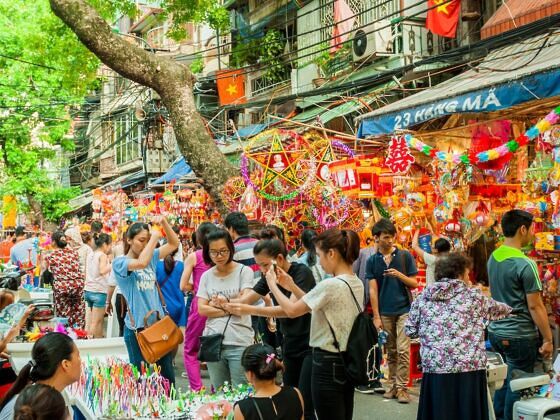
The Festivals in Hanoi, Vietnam, You Should Plan Your Travels Around
Tết Nguyên Đán
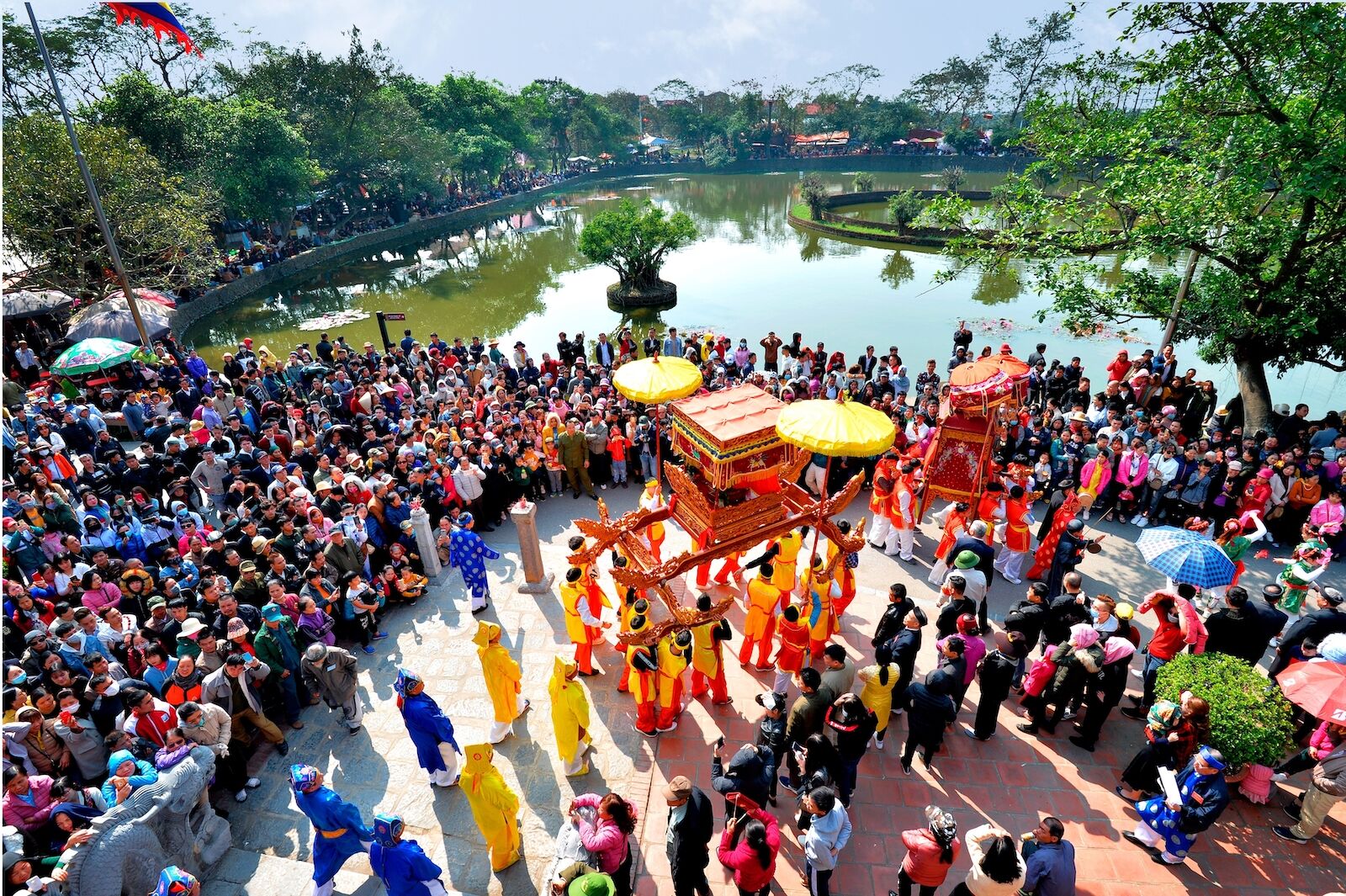
Photo: phuong10902/Shutterstocl
Tết is the most important traditional festival in Vietnam. A time for family reunions and honoring ancestors, Tết is celebrated at the beginning of the lunar new year, which usually falls between late January and early February. Celebrations typically last three days to a week, with preparations beginning weeks in advance to clean and decorate homes. Yellow mai blossoms feature heavily as a symbol of prosperity, along with banners, lanterns, and other decorations. In Hanoi, people flock to Hoan Kiem Lake to see the bright blooms of the yellow mai tree. Preparing and sharing auspicious foods such as banh chung (square glutinous rice cake), mut (preserved fruits), and xoi (sticky rice) is another important aspect of the Tết festival, which also features temple and pagoda visits, lion dances, fireworks, folk games, and more.
Buddha’s Birthday

Photo: Vietnam Stock Images/Shutterstocl
Buddha’s Birthday (Phật Đản) is celebrated in May or June on the 15th day of the fourth lunar month to commemorate the birth, enlightenment, and death of Buddha. In Vietnam, Buddhists celebrate by visiting temples and pagodas to offer flowers, incense, and prayers. Some release birds and fish as a symbolic act of liberation and compassion. Many participate in a bathing ceremony that entails pouring water over Buddha statues to bring purity and prosperity, as well as engage in acts of charity by donating food, clothes, and money to those in need. In Hanoi, the Ngọc Sơn Temple and Quán Sứ Pagoda are popular gathering places to celebrate Buddha’s Birthday. The city streets also lend themselves to a parade that sees participants dress up in colorful costumes and carry statues of Buddha, dragons, etc.
Gióng Festival
Vietnam’s Gióng Festival commemorates Saint Gióng, a warrior so greatly respected that the festivities are held twice: once in the Sóc Sơn district about 30 minutes north of Hanoi during the first lunar month and later in Hanoi during the fourth lunar month, which falls between April and May. Centered on the Phù Đổng Temple, Hanoi’s festivities are the livelier of the two, with dragon and lion dances, performances of traditional folk songs and dances, martial arts demonstrations, competitions such as tug-of-war and rice cooking, and other revelry. Two highlights of the festival are the procession where people carry a statue of Saint Gióng on a palanquin while performing traditional song and dance and the reenactments of the battles during which the national hero earned renown defending Vietnam from foreign enemies.
Mid-Autumn Festival
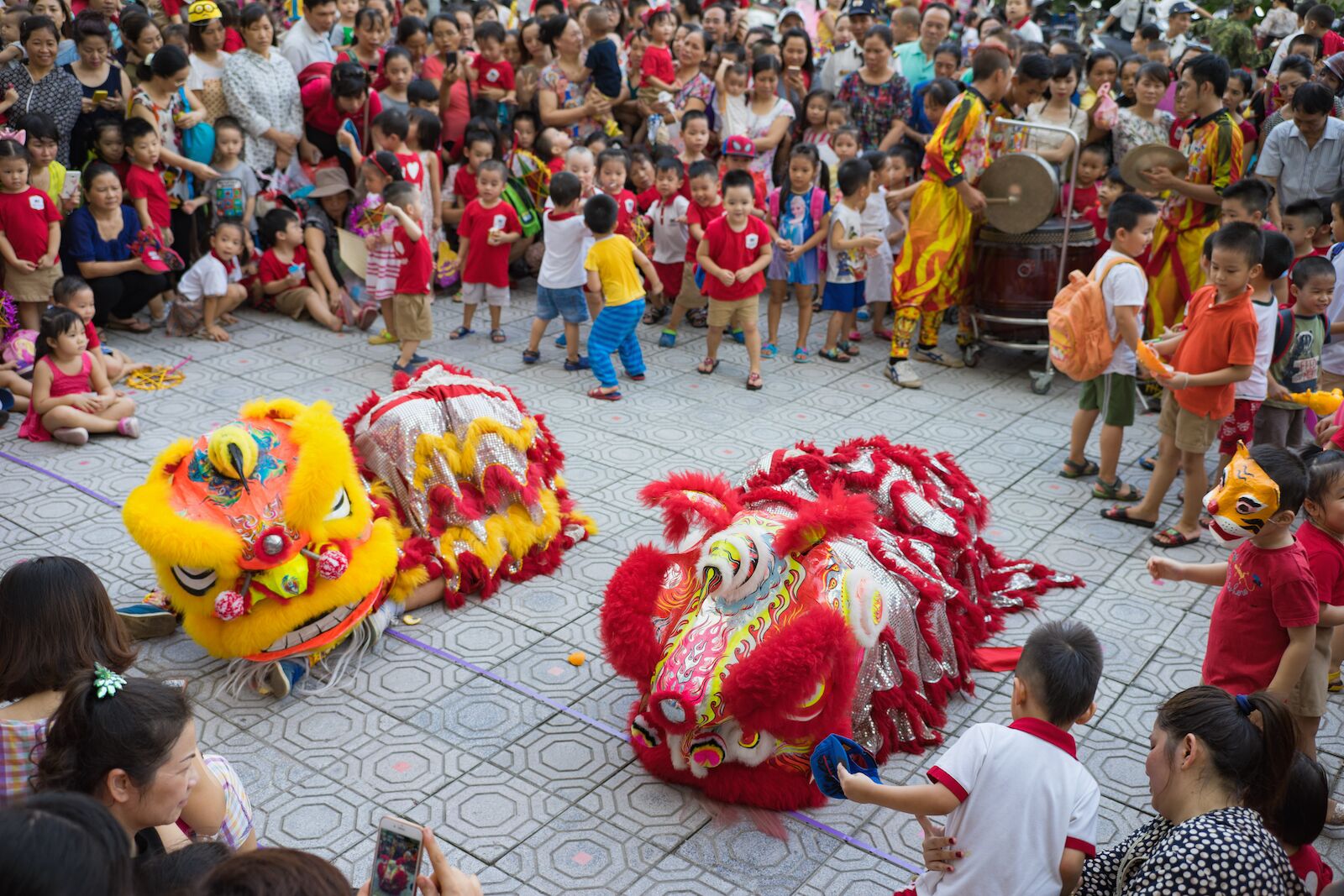
Photo: Vietnam Stock Images/Shutterstock
The Mid-Autumn Festival is celebrated on the 15th day of the eighth lunar month (September or October) in many Asian cultures, including Vietnam. During the festival, people in Hanoi decorate their homes with colorful lanterns and prepare traditional foods such as mooncakes. Children parade through the streets carrying lanterns and singing traditional songs, as well as participate in folk games. Two highlights of the festival are the dragon dance, which involves performers dressed in dragon costumes dancing to the beat of drums and cymbals, and the lion dance, which is believed to ward off evil spirits and bring good luck. Lion dancers visit homes and businesses throughout the city to perform the dance and collect offerings.
Vietnamese Independence Day

Photo: Tony albelton/Shutterstocl
Vietnamese Independence Day, also known as National Day, celebrates the day Vietnam declared its independence from French colonial rule on September 2, 1945. In Hanoi, the main celebration takes place at Ba Dinh Square, where former president Ho Chi Minh read the nation’s Declaration of Independence. The event begins with a flag-raising ceremony, followed by a parade featuring military troops, schoolchildren, and cultural groups. People gather to watch the parade, waving flags and singing patriotic songs. There are also cultural and art performances throughout the city, and many museums and historical sites offer free admission to encourage people to learn more about the country’s history and culture. Firework displays are also common during Vietnamese Independence Day, adding to the festive spirit.
Reunification Day
Reunification Day is celebrated annually on April 30 to honor the reunification of North and South Vietnam in 1975 and the end of the Vietnam War. Commemorations take place across the country. You’ll know it’s happening in Hanoi when you see more-than-usual Vietnamese flags, Reunification Day banners, and flowers plastered across the city. You might also see parades, exhibitions, street performances, and other patriotic displays. Ho Chi Minh City hosts one of the biggest Reunification Day parades in Hanoi, but Hanoi also stages one in Ba Dinh Square, near the Ho Chi Minh Mausoleum. Typical features of the parade include military marches and song and dance performances, followed by fireworks over Hoan Kiem Lake. If you’re in town at the end of April, it’s a nice time to visit historical sites that are particularly relevant to Vietnam’s liberation, such as the Ho Chi Minh Museum and Hoa Lo Prison.
Lim Festival
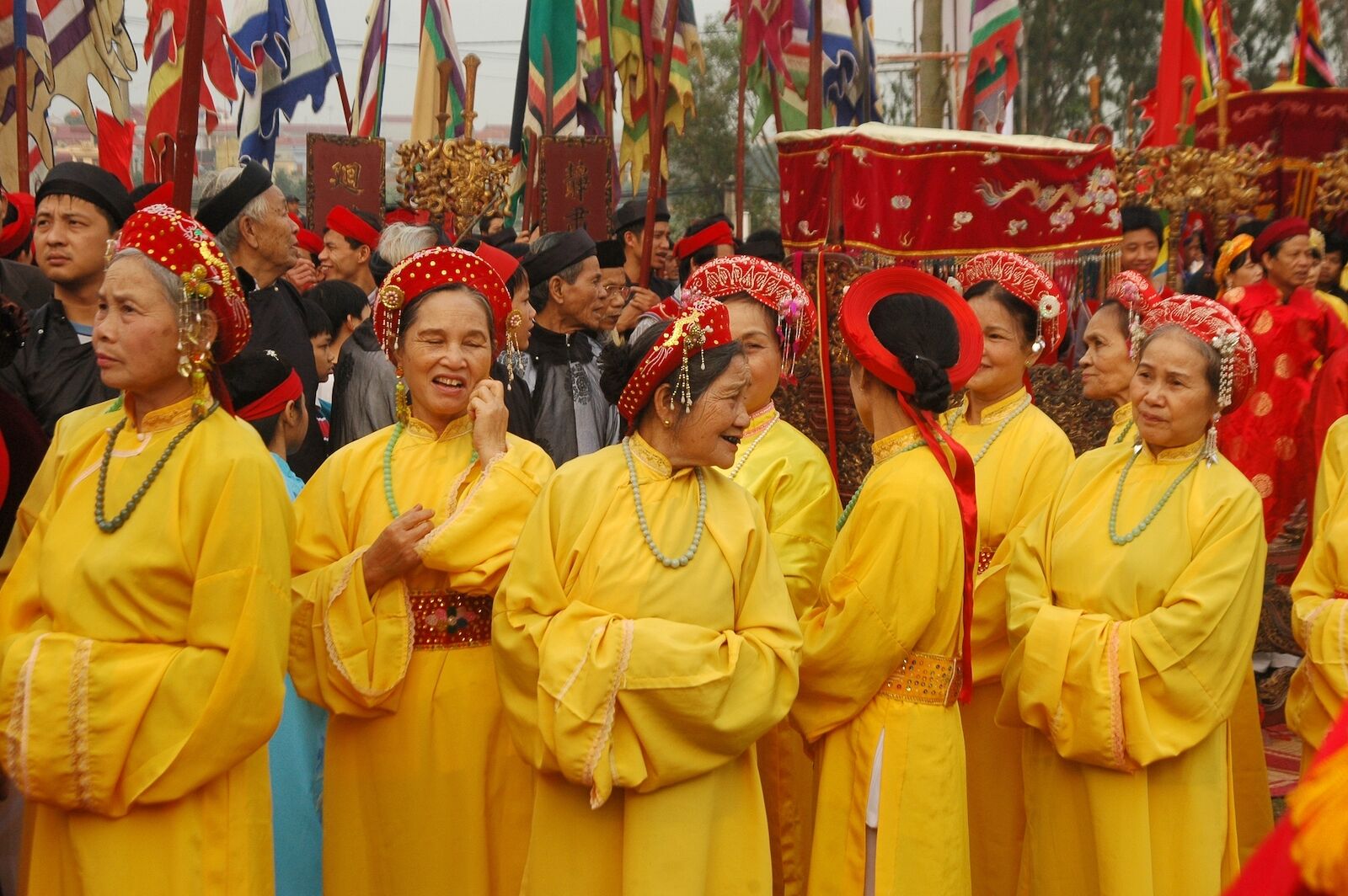
Photo: Luong Led/Shutterstock
Vietnam’s Lim Festival celebrates the arrival of spring and showcases the unique culture of the Red River Delta. In Hanoi, people gather to watch the colorful dragon boat parade, during which boats decorated with flowers and lanterns take to the water and sail down the Red River while performers sing and dance on board. There are also other cultural activities, including art exhibitions, food fairs, traditional games, and a fireworks display. Yet it’s the rural Tiên Du district of the Bắc Ninh province, roughly 45 minutes outside of the city, that celebrates best, with a unique ritual called quan họ in which traditionally dressed men and women serenade each other from dragon boats. The Lim Festival is held on the 12th and 13th day of the first lunar month in late January or early February.
Perfume Pagoda Festival
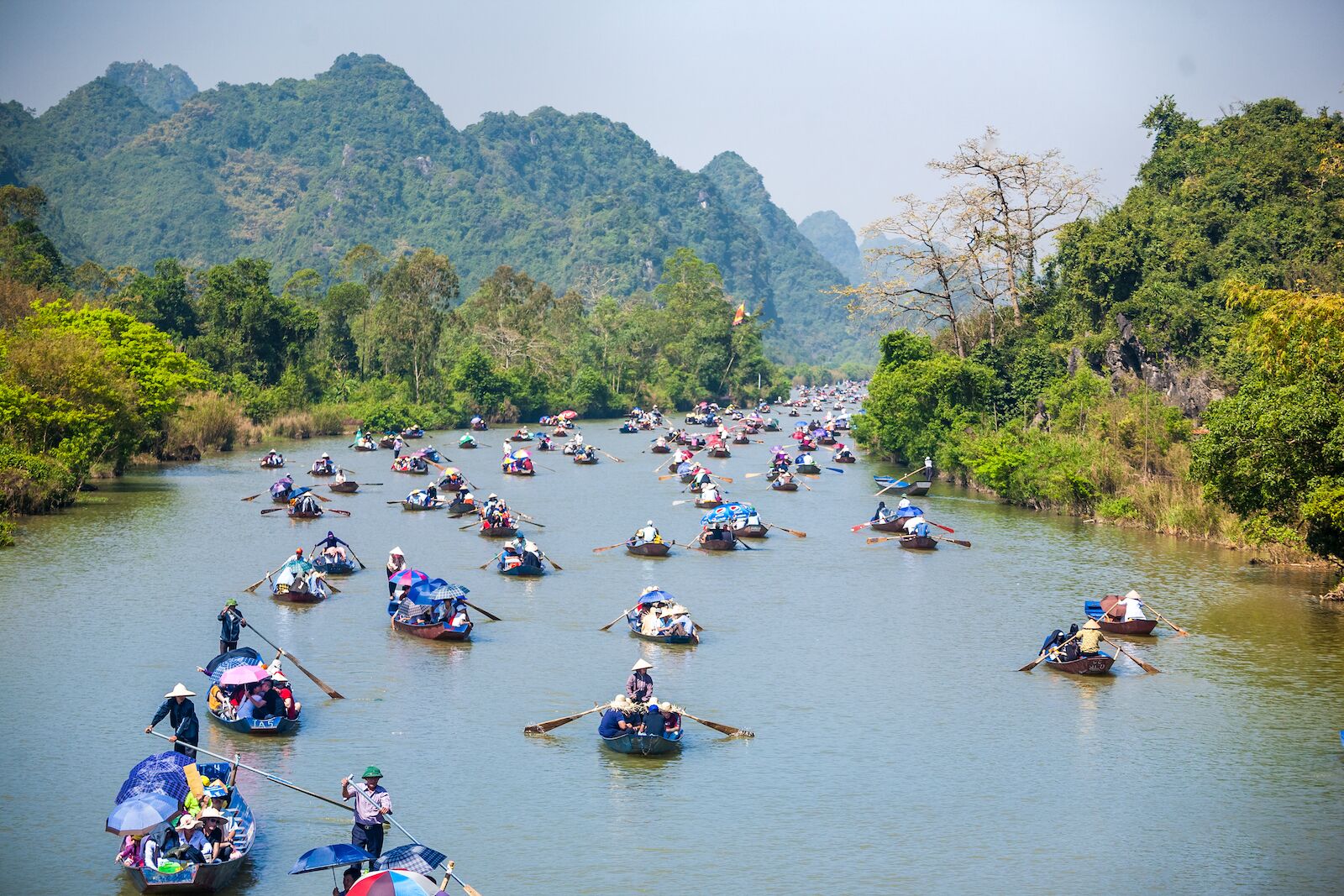
Photo: Tony Duy/Shutterstock
The Perfume (Hương) Pagoda Festival takes place annually around 40 miles from Hanoi in the Hương Sơn commune of the Mỹ Đức district. The festival usually takes place from the sixth day of the first lunar month to the end of the third lunar month, around February or April. The festival centers on a pilgrimage to the Perfume Pagoda, Vietnam’s most significant Buddhist pilgrimage site, which is a complex of temples and shrines built into the limestone cliffs of the Hương Tich mountains. The journey involves crossing the Yen Stream, hiking through the karst landscape, and crossing rice paddies, as well as facing a series of steps to reach the top of the Thien Tru Pagoda. Another key site for pilgrims is the Huong Tich cave, which is said to be the most sacred spot in the pagoda complex.
Le Mat Festival
The Le Mat Festival is an annual cultural event that celebrates the traditions and heritage of the Le Mat Village, located in the suburbs of Hanoi. The festival usually takes place on the 23rd day of the third lunar month, which typically falls in April. It involves a range of cultural activities, including a water procession from the village well, carp catching and offers, and a snake dance performance. The carps and snakes are highly symbolic and hold significant cultural value in the Le Mat village. During the festival, locals dress up in traditional costumes and participate in the various activities. If there’s one thing worth seeing, it’s the snake dance, which involves performers dancing with live snakes, a tradition that’s been passed down for generations.
Hung King Temple Festival
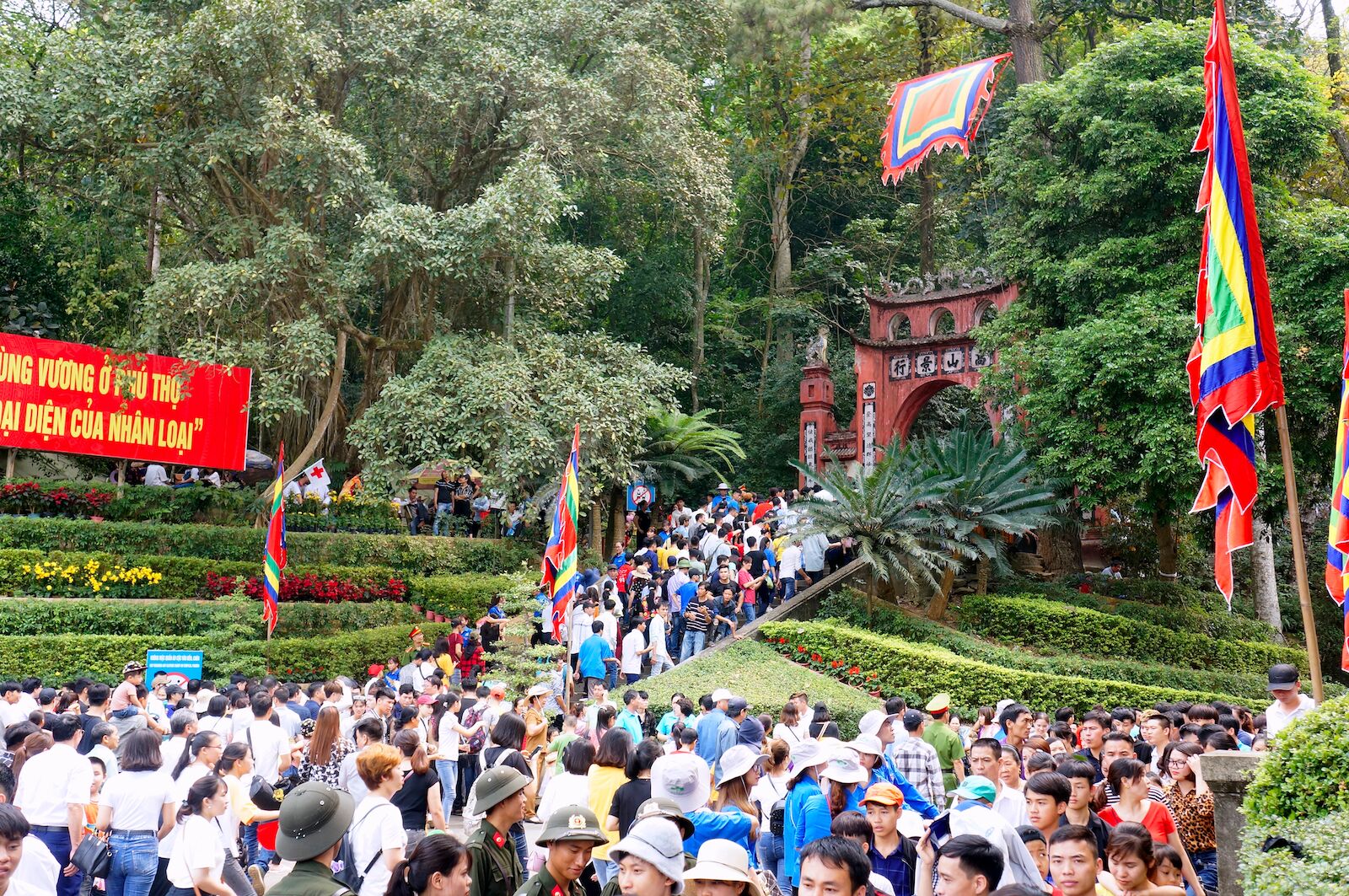
Photo: thi/Shutterstock
The Hung King Temple Festival, also known as Giỗ Tổ Hùng Vương, honors the Hùng Kings who are said to have founded Vietnam in 2879 BC. The festival is celebrated annually during the third lunar month, which typically falls in April, with the main event taking place on the 10th day, which is considered the official anniversary of the Hùng Kings’ death. The festival is held at the Hùng Temple in Phú Thọ province, located approximately 50 miles northwest of Hanoi. People visit the temple complex to offer incense and flowers and perform traditional rituals, including procession of palanquins that carry offerings to the Hùng Kings. The procession is accompanied by drummers, dancers, and performers dressed in colorful traditional costumes.
Wandering Souls Festival
The Wandering Souls Festival, also known as the Vu Lan Festival, is a traditional Vietnamese festival that honors the souls of ancestors. It’s celebrated in Hanoi and throughout the country on the 15th day of the seventh lunar month, usually in August or September. During the festival, people visit temples and pagodas to pray for their ancestors and offer them food, flowers, and incense. It’s believed that during this time, the gates of hell are opened, allowing wandering souls to return to Earth to visit their living relatives. Traditional performances such as quan họ folk songs and lion dances are also conducted during the festival. In addition, people light floating lanterns on the river to guide the wandering souls back to the afterlife, which is a particularly special sight for visitors to witness as part of a traditional Hanoi festival.
Where to stay during Hanoi’s festivals
Hanoi’s festivals tend to take place across the city, but like most of the action in Hanoi, some of the biggest displays concentrate in busy, central areas where the most comfortable hotels also tend to be. No list of accommodations in Hanoi would be complete without the landmark Metropole hotel, which is considered one of the most iconic buildings in the city. Otherwise, hotels near Ba Dinh Square and Hoan Kiem Lake like the two below are guaranteed to give you a good glimpse into Hanoi’s festival life — or you could always book a Hanoi Airbnb.
We hope you love these Hanoi hotels! So you know, Matador may collect a small commission from the links on this page if you decide to book a stay. Listed prices are accurate at the time of publication.
Sofitel Legend Metropole Hanoi

Photo: Hotels.com
The Hotel Metropole Hanoi opened near the Old Quarter in 1901 and became the first Sofitel Legend hotel in 2009. Notable figures such as Charlie Chaplin and global ambassadors have all stayed in the prestigious hotel — the hotel itself is an ambassador for luxury in Hanoi.
Where: 5 P. Ngô Quyền, Street, Hoàn Kiếm, Hà Nội 100000, Vietnam
Price per night: From $265
Peridot Grand Luxury Boutique Hotel
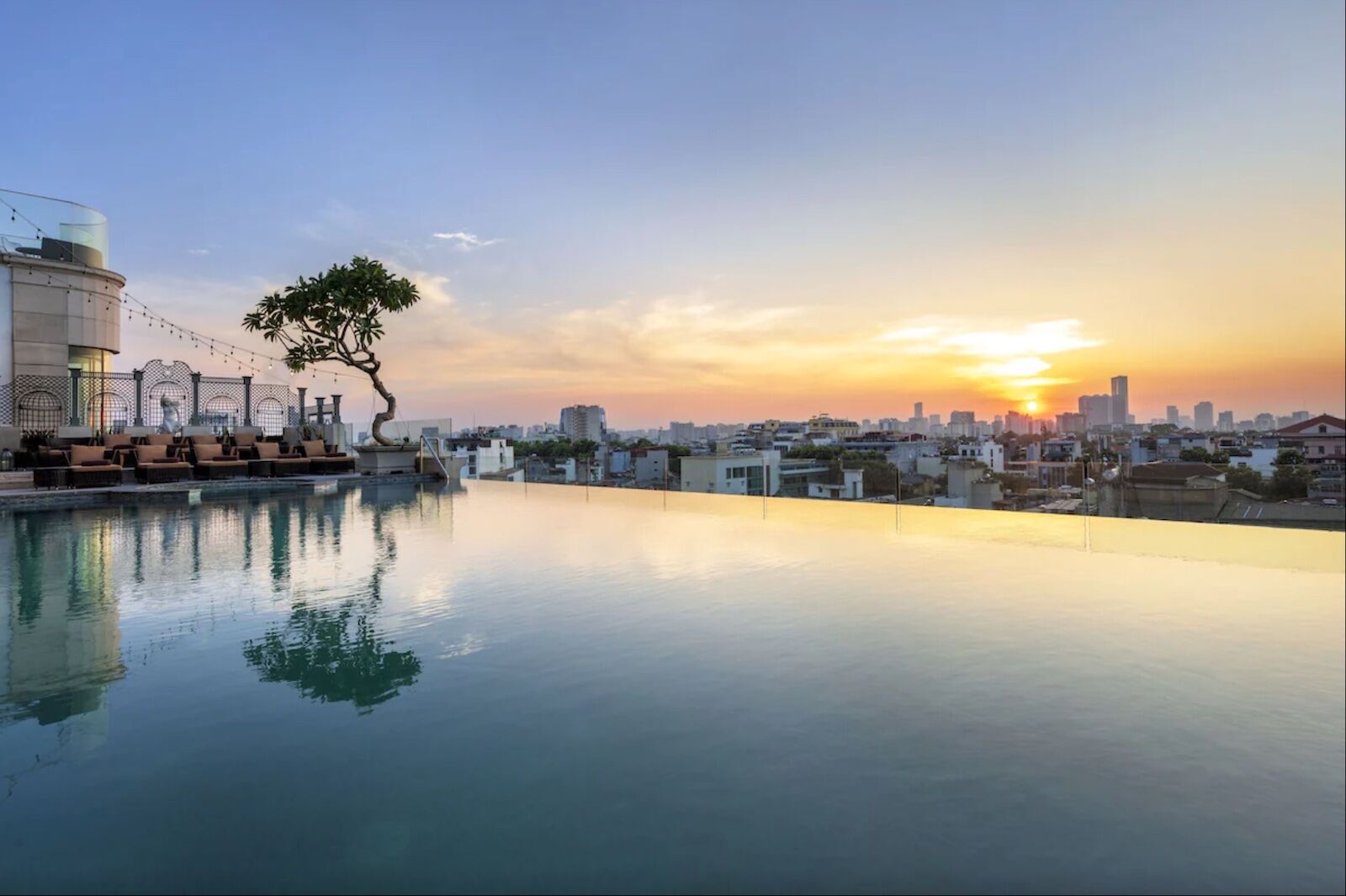
Photo: Hotels.com
Located in the Hoan Kiem district, a 10-minute walk from the lake, the Peridot Grand Luxury Boutique Hotel has everything you need for a comfortable stay (and then some). From the spa, pool, and rooftop terrace to the airport shuttle service that ensures you arrive there safely.
Where: 33 Đường Thành, Cửa Đông, Hoàn Kiếm, Hà Nội 100000, Vietnam
Price per night: From $120
InterContinental Hanoi Westlake, an IHG Hotel
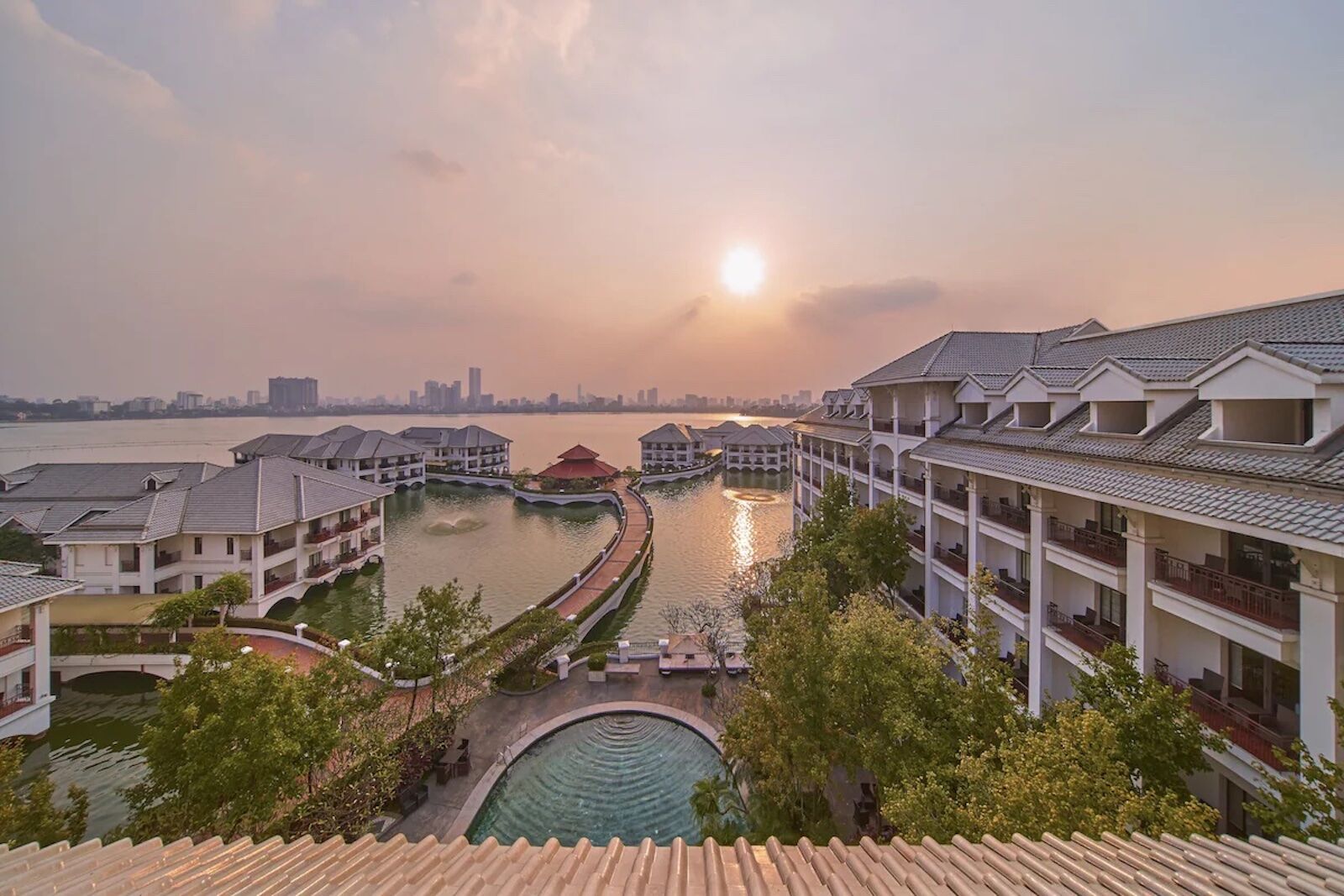
Photo: Hotels.com
This InterContinental hotel picked a prime location on Westlake, Hanoi’s largest lake and a popular destination for viewing temples and pagodas, experiencing restaurants and cafes, and finding accommodation, whether you’re a tourist or an expat. Stay here to be close to Ba Dinh.
Where: 05 P. Từ Hoa, Quảng An, Tây Hồ, Hà Nội, Vietnam
Price per night: From $125